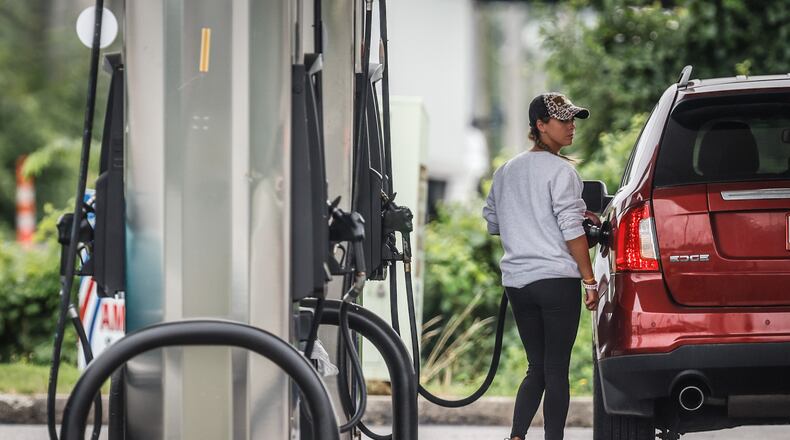Of course that comes on the heels of an enormous surge, as Dayton’s average gas price climbed from $3.08 to $5.08 between late January and early June of this year, in part tied to Russia’s invasion of Ukraine.
Average gasoline prices in Dayton have fallen 22 cents per gallon in the last week, averaging $4.02 a gallon Friday, AAA statistics show. The average price for a gallon of unleaded fuel in Springfield dropped 20 cents in the last week to $4.12 Friday, and in Cincinnati, it fell by 17 cents to $4.34 in the same amount of time.
The continued drop in the average gas price stems from a variety of factors, according to Patrick De Haan, head of petroleum analysis at GasBuddy, whose websites list real-time fuel prices at gas stations.
“It’s just a game of retailers catching up to the decline in prices, or I should say, at least passing along the decline,” he said. “Not much has changed in that much of the decline is still economic concerns being passed along in the form of lower wholesale (oil) prices and gasoline inventories are not up for four out of five weeks.”
In addition, there is a low level of demand destruction, which is what happens when prices for goods are so high that consumers can no longer afford them, and cease buying them.
“I think most Americans looked at the summer and, while prices have come down in the last six weeks, there’s kind of a shrinking opportunity for motorists to hit the road. Some schools are starting here in the next couple of weeks, so I think a lot of Americans planned around the high prices and either went or they didn’t. Low prices aren’t really incentivizing many people because their plans have been made for the rest of the summer.”
De Haan tweeted Friday that Ohio, and potentially Virginia, would fall back under $4 that day, becoming the 18th and 19th states to see average gas price at $3.99 or less.
But, with wholesale gasoline starting to rise again, the good news on gas prices may soon be coming to an end, De Haan said.
“Oil prices ... increased (earlier this week), but the wholesale price of gasoline increased a little bit more ... so it’s kind of a guessing game,” he said. “A lot of the volatility ... is just completely unpredictable and with us seeing a flurry of economic data being released this week, we’ve seen the same.”
The volatility likely will continue until the end of the summer driving season or until there’s “meaningful improvement between Russian and Ukraine,” De Haan said.
“But of course, that doesn’t seem like it’s going to happen anytime soon,” he said .
The average price of gas has come a long way from its spike to a high of $5.01 nationally on June 14, to $5.06 in Ohio on June 9 and to $5.08 in Dayton on June 8. But Gas Buddy’s daytongasprices.com website showed prices Friday ranging as low as $3.70 and as high as $4.59.
Despite the drop in prices nationwide, a new survey of consumers AAA released Tuesday confirms what they said earlier this spring: near record high gas prices are affecting driving habits and travel plans for motorists nationwide.
Nearly two-thirds (64%) of U.S. adults have changed their driving habits or lifestyle since March, with 23% making “major changes,” AAA said. Drivers’ top changes to offset high gas prices are driving less, combining errands, reducing shopping or dining out, delaying major purchases and postponing vacations this year.
“I think that $5 price point was a big shock to everyone’s system,” said AAA Club Alliance spokeswoman Kara Hitchens. “And we are still seeing that a lot of people are still working from home. Not everybody has returned to the office. That has probably contributed to the folks that are driving less and maybe it wasn’t necessarily intentional, but something that they were able to take advantage of.”
So will these short-term changes in people’s driving habits or lifestyle choices continue no matter how low gas prices may fall?
“As long as we see increases in other areas, you know, food prices (and) just groceries in general, I would say ‘Yes,’ because it’s helped the bottom line, people’s home budgets,” Hitchens said.
About the Author

